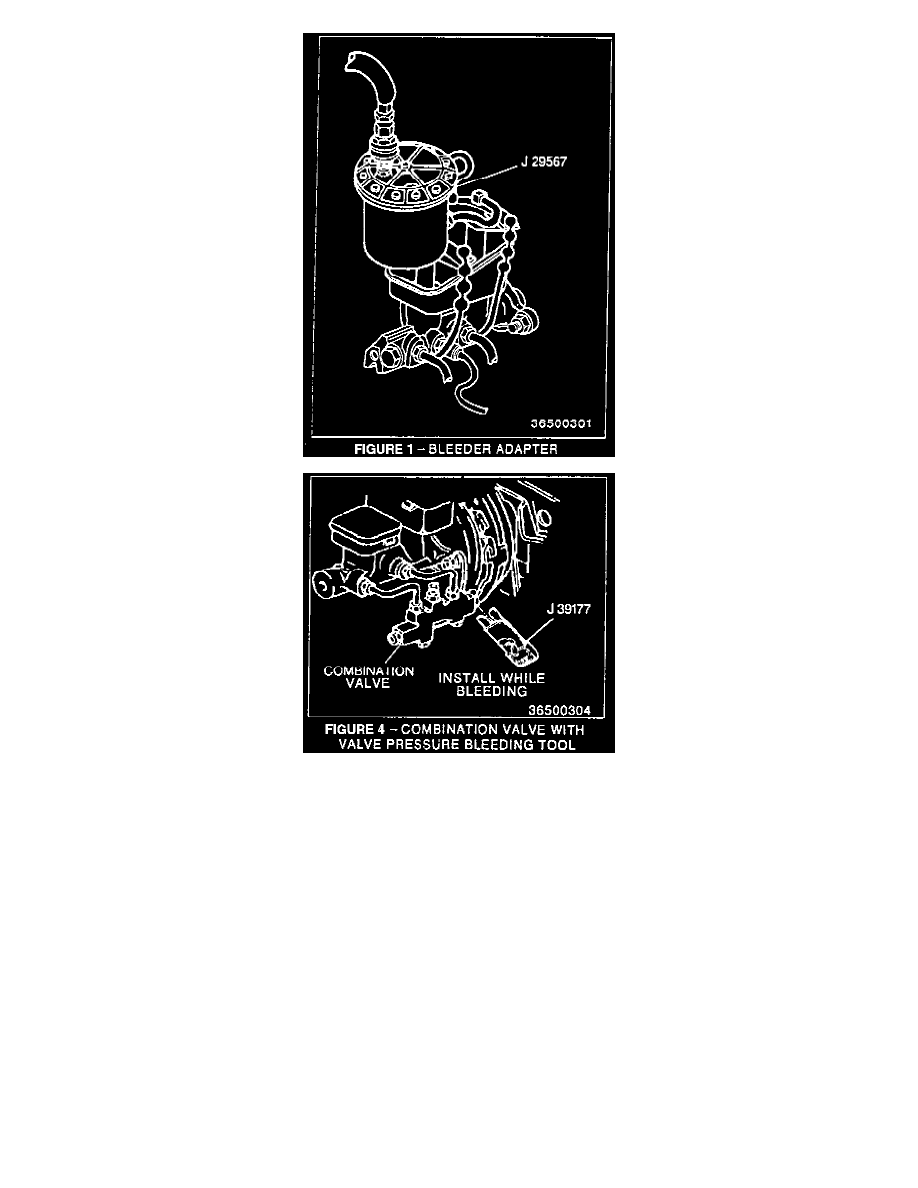G 20 Van V6-262 4.3L VIN Z (1993)

The pressure bleeding equipment must be of the diaphragm type. It must have a rubber diaphragm between the air supply and the brake fluid to prevent
air, moisture, oil, and other contaminants from entering the hydraulic system.
Important
You can expect to use two quarts of brake fluid to thoroughly bleed the system.
1.
Begin by attaching the pressure bleeder adaptor J 29567 to the master cylinder (Figure 1).
2.
Fill the pressure bleeder tank J 29532 at least 2/3 full with Delco Supreme No. 11 Hydraulic 8rake Fluid (GM P/N 1052535) or an equivalent
DOT 3 motor vehicle brake fluid. The bleeder tank must be bled each time brake fluid is added.
3.
Charge the bleeder tank to 140-170 kPa (20-25 psi) and connect the hose from the bleeder tank to the bleeder adaptor.
4.
Open the internal bleed screws 1/4 to 1/2 turn, on each side of the BPMV (Figure 2).
5.
Attach the valve pressure bleeding tools J 39177 to the left and right high pressure accumulator bleed valve stems of the BPMV (Figure 3) and to
the combination valve (Figure 4). Tighten tool J 39177 only finger tight.
6.
Open the pressure bleeder tank valve.
7.
Bleed each wheel in the following sequence:
^
Right rear
^
Left rear
^
Right front
^
Left front
Note:
